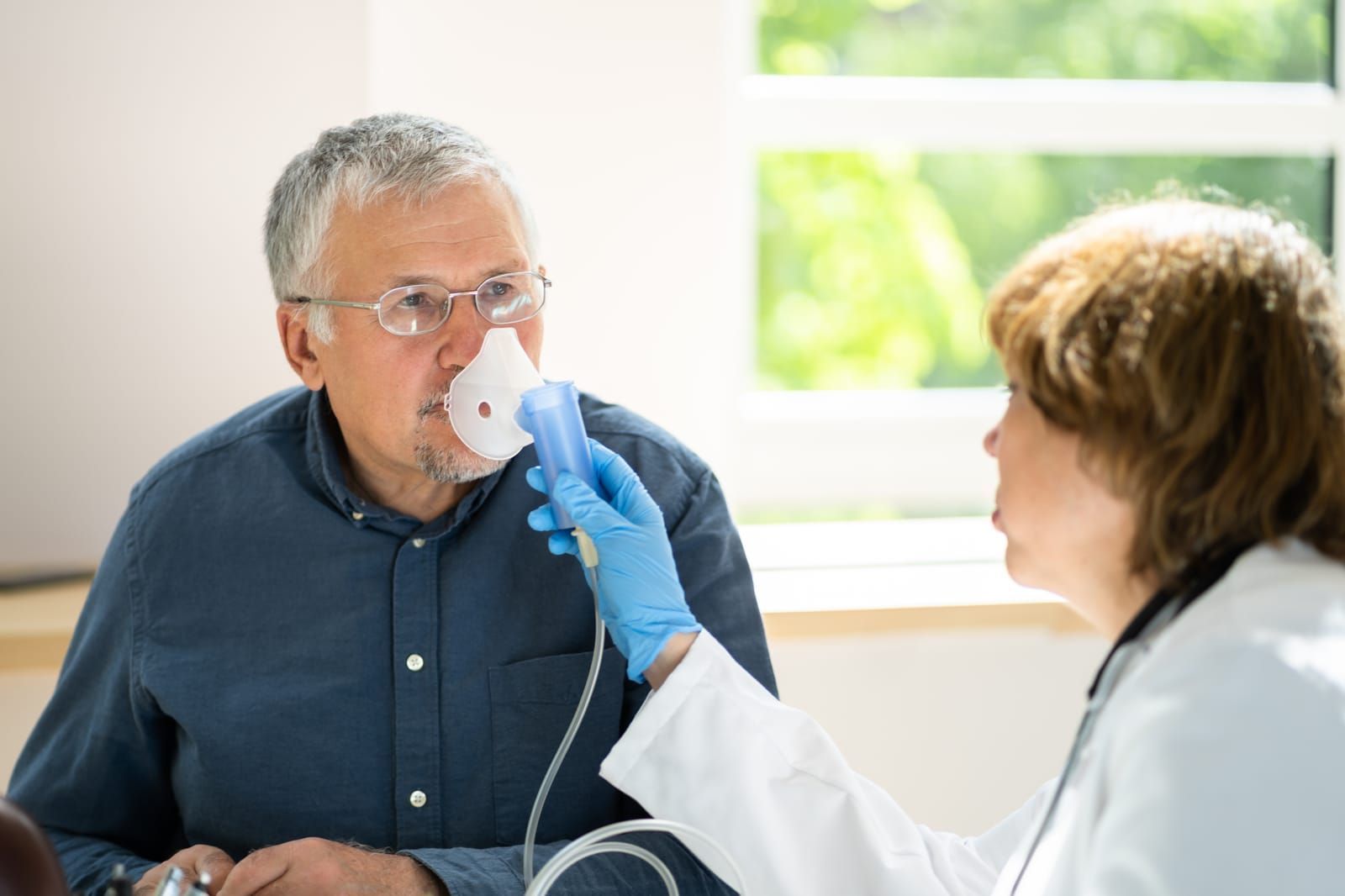8 Benefits of Earning CME Credits
April 13, 2022
The world of medicine is constantly marching forward. New scientific breakthroughs and technologies offer new possibilities for medical professionals the world over. The only way to keep up with the latest innovations in medical science is to continue your medical education. That is precisely why medical colleges have created the Continuing Medical Education credit system. CME credits are awarded to medical professionals that engage in training or further education after becoming licensed.
There are a lot of practical and personal reasons to pursue CME. Fortunately, they're not as rigorous as your medical school studies, and they can often be obtained for free! Online courses, independent course study, conferences, seminars, and product expos can all qualify for CME credits when sponsored by a recognized authority. Ultimately, your patients benefit from your expanded knowledge, but there are plenty of incentives for you too. Let's take a look at a few.
8 Benefits of Earning CME Credits
1. Keep Your Medical License
1. Keep Your Medical License
Let's start with the most obvious benefit: You get to continue working as a medical professional. If that doesn't motivate you, what else will? States have unique requirements for how many CME credits a medical professional has to accrue in a given time period. Washington state stipulates that 200 credits are required, but they grant that over the period of four years. The 50 credit per year standard is applied in many states, although others are more lenient.
For example, Nebraska calls for 25 credits a year, while Alabama asks for a meager 12. You don't need to get your credits in the same state where you practice, provided the credits come from recognized authorities like the AMA or AMBS. Some states mandate specific topics or knowledge areas, for instance Florida requires that some of your credits be related to HIV/AIDS prevention and treatment. Regardless of where you practice, CME keeps you in business.
2. Build More Professional Relationships
CME puts you in contact with other professionals in the same field, which means CME makes for great networking opportunities. When you join a conference to learn more about a new treatment, you're going to have the opportunity to meet other practitioners and expand your contacts. That can be beneficial later if you choose to seek work in another facility or even another state. Given the interstate nature of most CME meetings, you're sure to meet people across state lines.
As many CME trainings and meetings are conducted by representatives of medical product manufacturers, you can also establish relationships with these companies to stay abreast of the latest developments. Pharmaceutical industry reps and manufacturers of machines alike aim to build lasting relationships with practitioners for your mutual benefit. You may even meet professionals from other countries to further expand your network.
3. They're Flexible!
Unlike med school, CME credit can be earned in a number of ways, and in fact the majority of these credits are awarded outside of classroom settings. That means you don't need to stop whatever you're doing to dedicate a week or month to rack up credit for the year. While there are in-person courses you can attend to accumulate credit, you can also opt for self-guided study programs. You simply log in and advance at your own pace.
Even meetings are more flexible now. Thanks to the widespread adoption of virtual conferencing, more meetings are available without the hassle of booking flights and hotels. You can accumulate credit faster from the comfort of your home. CME credit has never been easier to obtain, and the quality of the instruction you'll receive hasn't declined.
4. Learn About New Products
One of the biggest benefits of CME training and meetings is that you'll learn more about the latest products on the market. Even ones that haven't yet been approved by the FDA are worth your consideration. Knowing what's about to launch and what it can do will help you prepare your private practice for adoption. Whether it's a new medicine that can treat a stubborn condition or an innovative tool, keeping up with new products helps your practice stay relevant.
Learning about medicine and devices will also prepare you for future sessions. Perhaps you pursue training with a new treatment so that you can be one of the first to implement it. Plus, patients are always excited to see the latest technology. It inspires confidence and shows that you are staying up to date. They're more likely to trust the quality of care provided by your institution or practice when they see that you use new products in your work.
5. Improve as a Professional
An
performed by Johns Hopkins revealed that 79% of specialists who fulfilled their CME credit obligations demonstrated an improvement in their medical knowledge. There were positive findings with regard to clinical outcomes, as well. Patients were less likely to be sent to emergency care and had reduced complications after operations and other treatments. CME also was shown to improve recertification exam results.
In short, CME has been proven to help professionals develop and become even better. That's why it's a requirement in most countries and has continued to be promoted by medical boards.
6. Earn More
Practitioners who fulfill their CME credit requirements can often qualify for raises at their places of employment. As a private practice, you can also point to your CME as a justification for the quality of the service you provide. By becoming more employable and more attractive to patients, you can secure higher earnings going forward. Continued education is strongly correlated with earnings for doctors and other medical professionals.
When you consider that you can obtain a significant amount of your CME credits for free, CME becomes a smart investment. You exchange some of your time and very little money to receive much larger rewards.
7. Increase Job Stability
Obviously, your job stability would be adversely affected by losing your medical license, which is what can happen if you don't fulfill your CME requirements. However, hospitals and private practices alike may also impose additional requirements for CME that can affect your employment. A commitment to CME improves your stability. A doctor that rushes to meet their obligations by cramming dozens of hours into the end of the year is quietly indicating that CME isn't a priority.
8. Give Your Patients Confidence
Above all, there's one benefit that stands out most from CME: The good it does for your patients. Not only are you able to provide better medical attention and improve their clinical outcomes, but you inspire far more confidence as a professional. Even just commenting on a recent seminar or highlighting the benefits of a new medication speaks volumes to your commitment to helping your patients. They take note of these little things. Your continued education puts them at ease.
That's the reason that drives us to promote CME meetings for medical professionals across the country. We strive for better care for patients and recognize that CME plays an important role in ensuring that. Our meetings are approved for AMA PRA credit, which is one of the most widely recognized certifications for CME credits in the country. To register for our next CME meeting,
The U.S. spends nearly $5 trillion on healthcare every year—about 20% of its GDP. With artificial intelligence (AI) set to transform medicine, the pressing question for physicians is: Will AI actually reduce healthcare costs, or will it simply add another expensive tool? This matters not only for the financial sustainability of practices but also for patient outcomes and the future of healthcare delivery. Let’s separate facts from hype and explore what AI truly means for healthcare costs.

Sleep apnea is a common yet complex condition that many physicians encounter in their practice. While the diagnosis and treatment of sleep apnea can significantly improve patients’ quality of life, managing this disorder presents several challenges for healthcare providers. We’ll explore some of the key hurdles physicians face in managing sleep apnea and discuss strategies to overcome them

Nasal polyps present a significant challenge for both patients and clinicians, often leading to chronic symptoms that affect quality of life. Recent advancements in research and treatment strategies have paved the way for innovative approaches to manage this condition effectively. This blog will explore some of the latest strategies and treatment options available for nasal polyp management.

Allergies significantly contribute to common nasal conditions such as rhinitis, sinusitis, and nasal polyps. Allergic reactions can lead to chronic inflammation, which increases the risk of complications and recurrent symptoms in our patients. Understanding this connection is essential for effective diagnosis and treatment.










